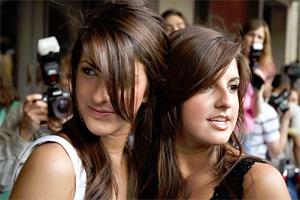
Scientists have known that autism is a combination of genes and the environment for a long time. But the focus has been on genes because early twin studies suggested that autism was mostly genetic.
Scientists looked at sets of identical and fraternal twins to see how often both twins in a pair had autism. Remember, identical twins have the exact same DNA whereas fraternal twins only share as much DNA as any other siblings.
If autism were purely genetic, then both identical twins in a pair should either have it or not. It should be very rare for one twin in a pair to have autism and the other to not have autism. Fraternal twins should have it at about the same rate as any other siblings.
But if autism were purely environmental, then both twins in an identical or fraternal twin pair should get it at about the same rate. Depending on what part of the environment is causing the problem, this rate might be higher than that of siblings.
